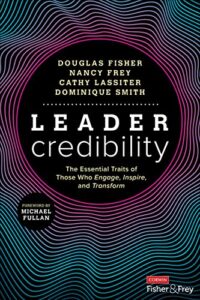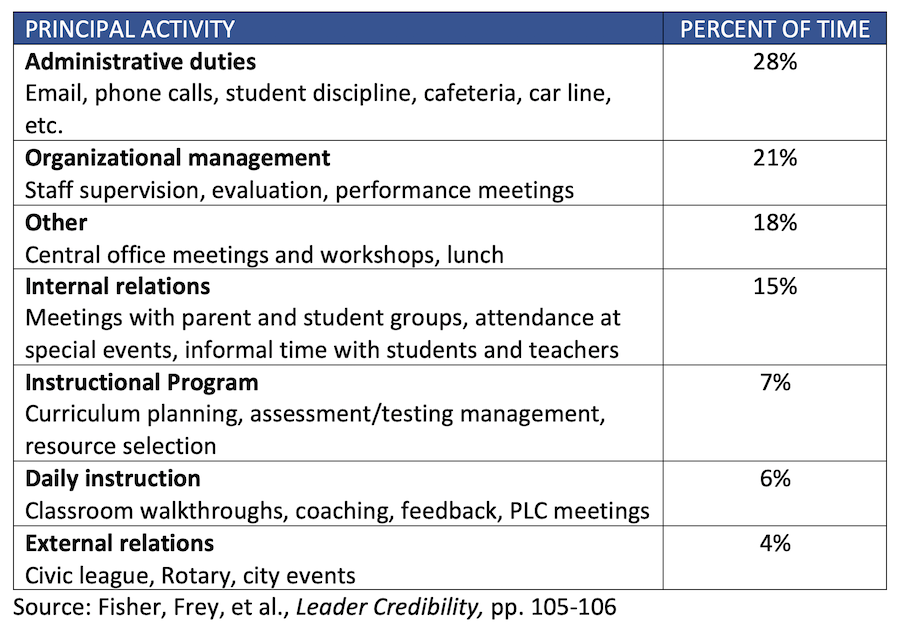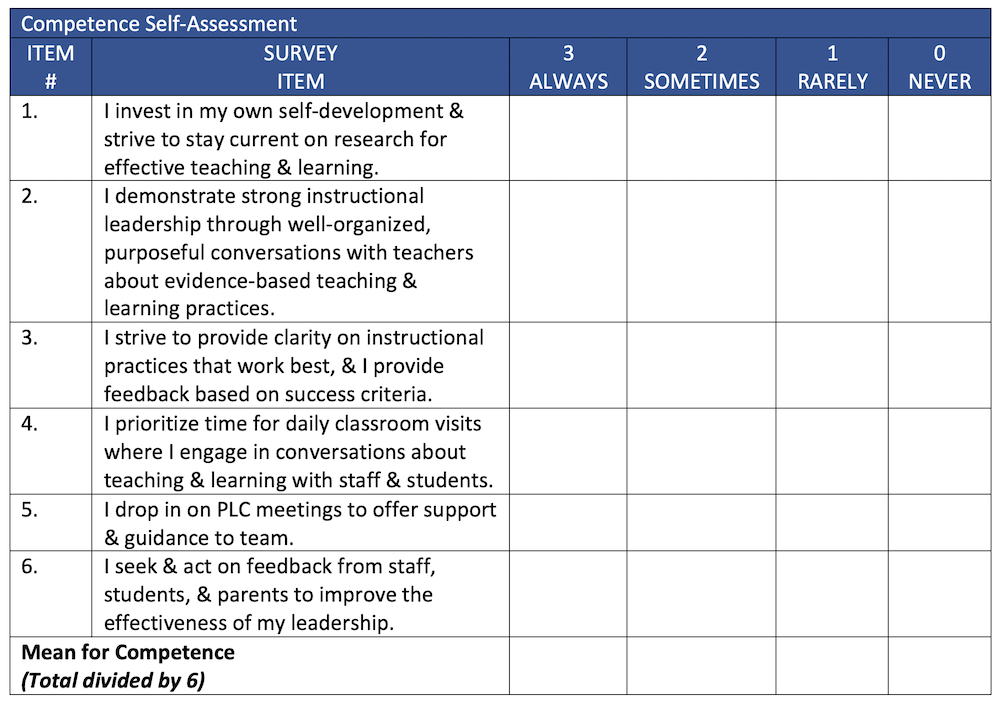The Essential Traits of School Leader Credibility
Leader Credibility: The Essential Traits of Those Who Engage, Inspire, and Transform
By Douglas Fisher, Nancy Frey, Cathy Lassiter and Dominique Smith
(Corwin/Sage Publishers, 2022 – Learn more)
Reviewed by Cathy Gassenheimer

They say that as we grow older, we begin to emulate our parents. And, while I’m not ready to start reading books “backwards,” I’ve discovered two books that might have served me well if I had done just that.

The book before me now – Leader Credibility: The Essential Traits of Those Who Engage, Inspire, and Transform, by Douglas Fisher and Nancy Frey (with Cathy Lassiter and Dominique Smith) is another important contribution to school leadership that I recommend you begin by reading the last chapter first.
Chapter 6 is titled “Forward Thinking to be Future Ready,” and it makes the strong case for why the most effective leaders are learners who carve out time weekly to keep themselves informed and updated on the latest education trends and research.
Sadly, today this is not the case. Just take a moment to peruse the figure below:
Principal Activity Distributions by Time
What do you notice about the time allocation? Is it similar or different to how you spend your professional time? The reason the authors included this information is to stress the importance of leaders spending MORE time on instructional leadership. And doing so is a prerequisite to creating or strengthening a culture of high expectations and learning for all.
Modeling the Way
The authors write: “Principals and other school leaders need to spend time individually and collectively learning about current trends and research in the field.” In today’s rapidly changing world, being “forward thinking and future ready” is essential (p. 106). In fact, they boldly suggest, leaders should set aside “dedicated time weekly” for “reading journals, listening to education podcasts, attending webinars, etc., so they can lead change efforts confidently in alignment with what will be required of schools in the future” (pp. 106-107).
Begin Your Reading by Reading This Book
It’s never too late to strengthen your knowledge and insights about leadership, effective schools and teaching. A good way to begin is by reading this book. But don’t take my word for it. Leadership expert Michael Fullan, one of the most enlightened and guiding thinkers of our generation—now in his 80s—notes:
“…the book contains all the key concepts one needs to be a successful leader. The next requirement is that these concepts must be unpacked, both for clarity and for understanding and developing the ideas, and this is the real strength of the book” (p. xii)
Short and Powerful Read
This powerful read is only 120 pages plus a six-page appendix. The chapters are organized by key leadership capabilities: Trust, Competence, Dynamism, Immediacy, and Forward Thinking.
Each chapter begins with a self-assessment to help gauge your strengths and to surface areas in need of attention. Lest you feel like you need to pull out a hairshirt or switch to motivate your reader self, be assured the authors’ style is to invite you to consider and grow. In addition to the questions about strengths and growth opportunities, you are asked to consider conclusions and resources – both people and information – that you can use.
Trustworthiness in Leadership
Fisher and Frey stress the importance of building relational trust, a key factor found in consistently high-performing schools. Establishing this type of trust requires creating mutual respect between parties, exhibiting personal regard for colleagues, and demonstrating competence in key areas. Embedded in trust is the evidence of personal integrity. As the old adage reminds us, trust is hard to gain and easy to lose.
Competence: The Language and Skills of Leaders
A new catch phrase is added at the beginning of this chapter: Rather than “leading by walking around,“ the authors suggest “leading by talking around.” The self-assessment in this chapter is so important in my mind that I’ve captured it below.
Keep this self-assessment nearby to remind you that taking the time to build your instructional competence is a core activity and is needed if you want your school and/or district to continuously improve.
Dynamism: Passion, Excitement, and Self-Confidence to Build Credibility
If you are like me, the word dynamism caused you to pause. Happily, the authors describe what they mean this way: “The research shows that leaders who demonstrate dynamism are passionate, committed, and all-in on the work.” Reciprocity is also a key factor in dynamism as leaders and teachers “get what they give” (p. 61).
Immediacy: Verbal & Nonverbal indicators of Relatedness
Like dynamism, I needed a moment to check my understanding of the term immediacy, which the authors define as “the degree of perceived physical or psychological closeness between two people” (p. 79). The authors are quick to note that immediacy is not just a friendship; it involves actions that include:
- Being visibly engaged
- Making frequent small talk
- Leading with questions
- Making appropriate physical contact (handshake, high fives, etc.)
- Finding opportunities to laugh with your staff members
In other words effective leaders don’t spend most of their time behind their desks in their offices. They interact with others, visiting classrooms, exhibiting their desire to learn, grow, and support others to achieve a mutual purpose: high levels of learning for all.
Leaders Learn and Continue to Grow
This book reminds us that effective leadership is not static. It’s about trust building, leading by “talking around,” modeling the type of behavior we expect of others, being passionately committed to key goals, and being a life-long student of effective practices and trends.
It’s hard and rewarding work, something that successful leaders invest themselves in daily. Use this roadmap to strengthen your leadership skills. It will pay countless dividends.
Cathy Gassenheimer is a professional learning consultant specializing in collaborative adult learning and collective efficacy. For 22 years she was Executive Vice President of the Alabama Best Practices Center, a program of Alabama’s statewide business/community nonprofit A+ Education Partnership, and led the work of three statewide educator networks focused on teaching, leadership, and instructional coaching. Connect with her via LinkedIn and on Twitter @cathygassenheim.




































